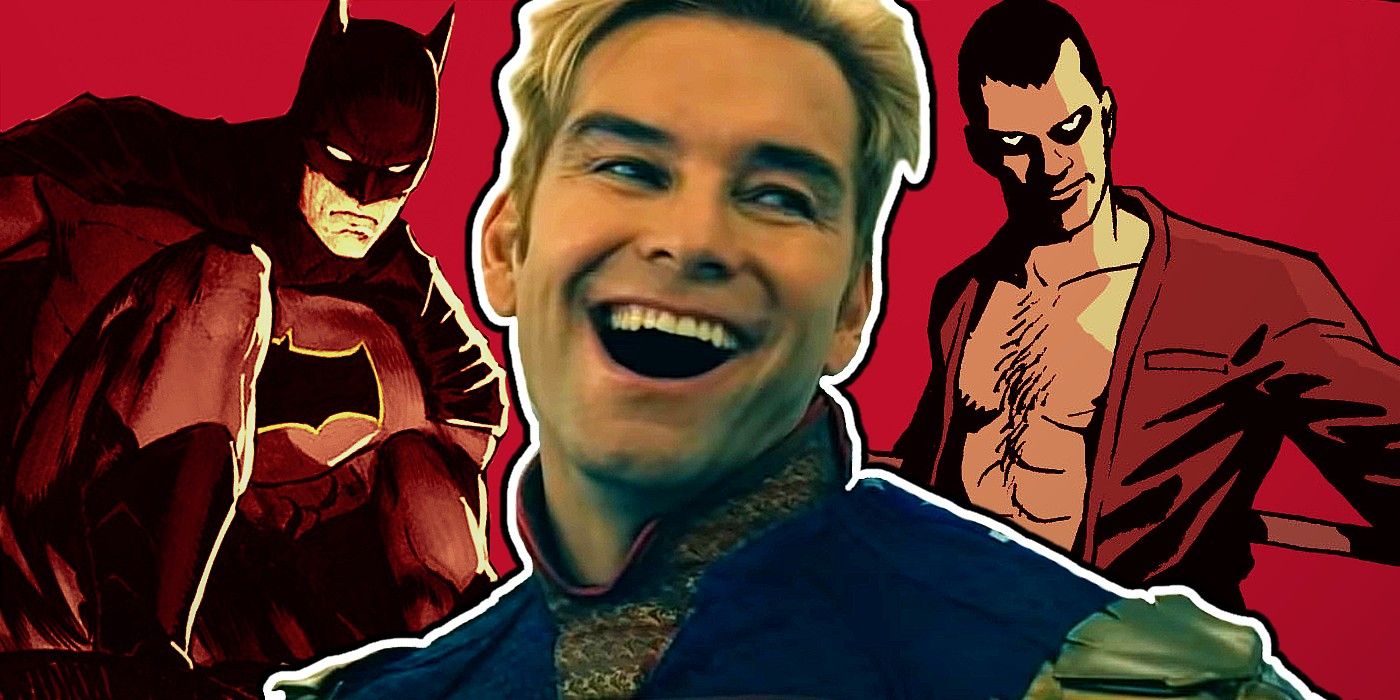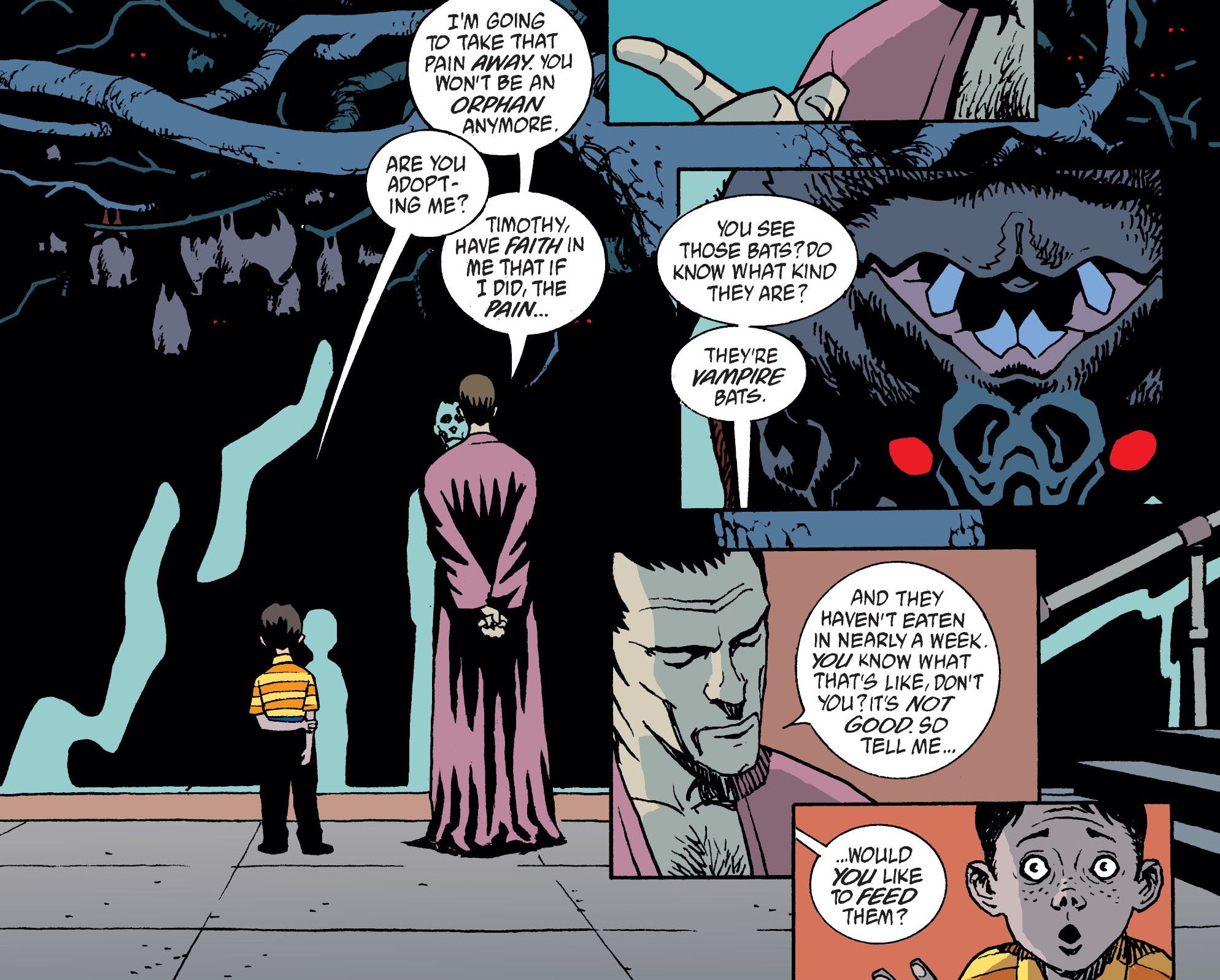
While the original The Boys comics parodied Batman with multiple characters, the series never went after Bruce Wayne as viciously as John Constantine's Hellblazer series. Created by Garth Ennis and Darick Robertson, The Boys follows a black-ops team dedicated to keeping superpowered individuals under control, featuring parodies of characters like Spider-Man, Superman, Wonder Woman, and even Batman's protege Nightwing.
The series took two different in-depth stabs at Batman in the characters of Black Noir and Tek Knight. Black Noir is a silent member of the Justice League-alike Seven, eventually revealed to be a clone of the ultra-powerful Homelander, while Tek Knight appears early in the series, mixing Batman and Iron Man but veering far closer to Bruce Wayne in the depiction of a wealthy playboy known for his expensive equipment, underground lair, and string of teen sidekicks.
But neither of The Boys' Batman-analogues are anywhere near as vicious as Hellblazer's Stanley W. Manor. Manor is a former lover of John Constantine who the wisecracking wizard eventually conned and humiliated, and seemingly takes his name from the phrase"stately Wayne Manor," sometimes used to describe Bruce Wayne's mansion. Hellblazer #146-174 follows Manor's punishment of John Constantine once he discovers his former flame is still alive, with John escaping prison and traveling across America to confront his wealthy antagonist. Manor is a rich playboy obsessed with bats and weaponry, aided by an obsequious priest who provides him with "young wards" who keep mysteriously going missing. Hellblazer #174 - from Brian Azzarello and Marcelo Frusin - sees Manor recounting his recent murder of Constantine to the priest, who has brought the latest ward, Timothy, to Manor's home (again, likely a reference to DC's Tim Drake Robin.)

It's implied that Manor engages in a sick ritual of feeding his wards to vampire bats - evoking the idea that Batman "feeds" his young sidekicks to his war on crime - but gets away with that and other dark deeds since he's so rich and influential that even "the president is afraid to say no to him." Constantine's cunning and hunger for life are pitted against Manor's lethal boredom and needless excess, with John ultimately allowing Manor's henchman to seemingly kill him, then returning to "haunt" Manor until he takes his own life.
Hellblazer's depiction of Stanley W. Manor as a man poisoned by his wealth, seeking kicks that harm others and don't satisfy the bottomless pit of his own dissatisfaction, is a savage assessment of Batman, and one The Boys never quite mustered. While Black Noir is the series' obvious Batman stand-in (and likewise in the recent TV adaptation), his similarities to the Dark Knight are almost entirely used as a mislead about his true nature rather than to parody the character he's based on. In contrast, Tek Knight is a blatant Batman analogue, but is actually one of The Boys' most sympathetic "heroes." While Tek Knight engages in the series' characteristic debauchery, it's eventually revealed that his urges are the result of a brain tumor, and he dies saving a mother and her baby from a falling wheelbarrow full of concrete blocks.
But while The Boys ends up going pretty easy on Batman, Hellblazer didn't, with the series going out of its way to make Stanley W. Manor as despicable as possible, then having him die in despair over finally getting his wish to defeat John Constantine (who was back, alive and well, next issue.) While Constantine may have a low opinion of Batman in DC's mainstream universe, Azzarello's Hellblazer run took its time dismantling the idea of the billionaire superhero. Strangely, if fans of The Boys want to see Batman really taken down a peg, Constantine - not Billy Butcher - is the man to do it.
No comments:
Post a Comment